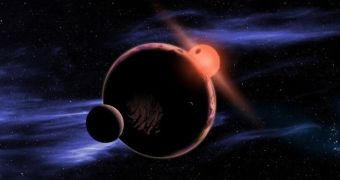A recent paper in the International Journal of Astrobiology argues that, all things considered, alien life is most likely to be found in the proximity of celestial bodies that astronomers refer to as red dwarf stars.
In this paper, scientists explain that, to begin with, red dwarf stars are mind-bogglingly common in the universe. In fact, previous investigations have shown that they account for about 70% of all stars.
These celestial bodies, which some like to call M dwarf stars, are usually about 10 to 20% the size of our Sun. What's more, they are not exactly bright. On the contrary, they can be up to 50 times dimmer than our parent star.
The sheer number of red dwarf stars populating the universe makes these celestial bodies prime candidates for investigations focusing on the discovery of alien life. More so since they typically have planets orbiting them.
Looking to figure out just how likely to host alien like M dwarf stars might be, Brad Hansen, an astrophysicist at the University of California at Los Angeles in the US, pieced together and analyzed several computer models.
These computer models allowed the scientist to draw conclusions concerning how many low-mass planets are likely to form in the proximity of a red dwarf star and where exactly these planets might be located, Phys Org informs.
Brad Hansen found that M dwarf stars that pack about 50% less mass than our Sun and whose proto-planetary disks pack the gas and dust equivalent of six times Earth's overall mass can birth an average of 4 to 6 surviving planets.
Of these planets, 1 or 2 are likely to be located in the stars' habitable zone. Hence, they might accommodate for significant amounts of water (sometimes even 25 times more water than on Earth) and serve as a home to alien life.
“We demonstrate that almost every planetary system assembled in this fashion contains at least one planet in the habitable zone, and that water delivery to these planets can potentially produce water content comparable to that of Earth.”
“Our results broadly support the notion that habitable planets are plentiful around M dwarfs in the solar neighborhood,” the researcher writes in the Abstract to his paper. “A high frequency of potentially habitable planets makes it more likely that we could actually find one that is habitable,” he adds.
As encouraging as these findings might be, the fact remains that pinning down the regions of the universe where alien life might be hiding is not the same as actually discovering extraterrestrial life forms. Still, it looks like the scientific community is quite convinced that it is only a matter of time until this happens.

 14 DAY TRIAL //
14 DAY TRIAL //